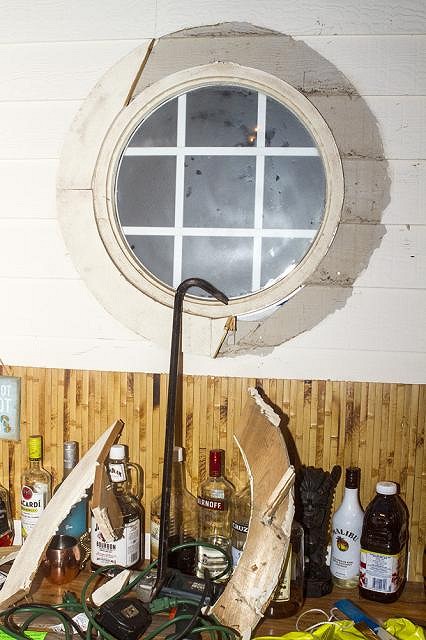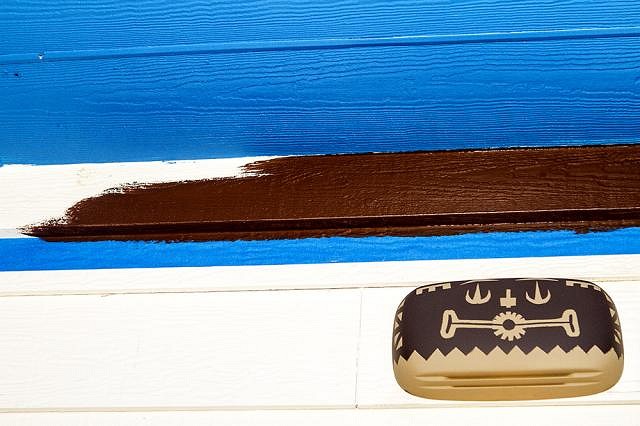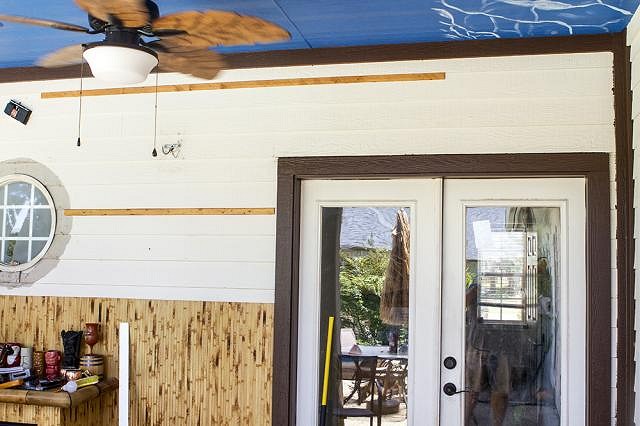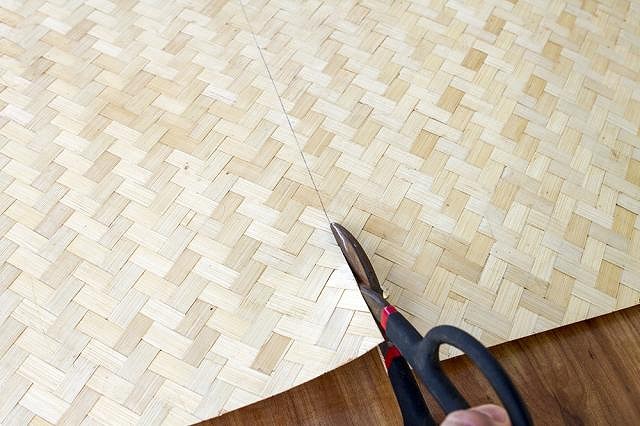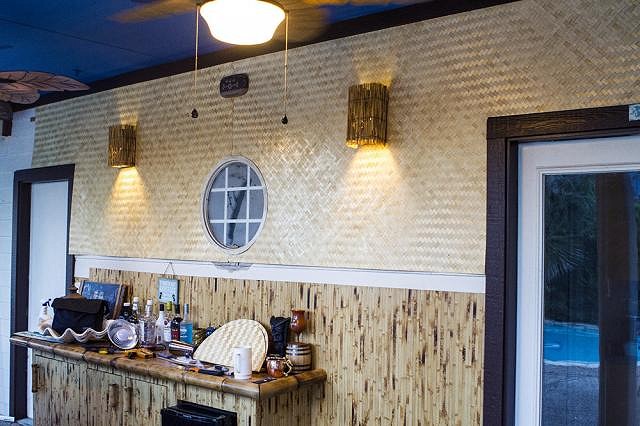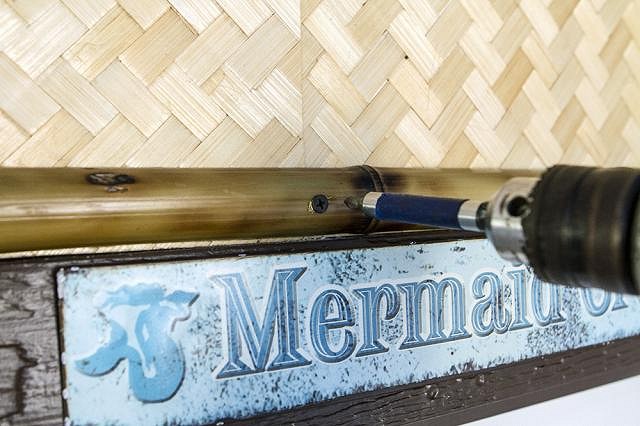Tiki Central / Home Tiki Bars / Lagoon of Mystery
Post #780256 by Prikli Pear on Mon, Oct 2, 2017 6:46 PM
|
PP

Prikli Pear
Posted
posted
on
Mon, Oct 2, 2017 6:46 PM
Back to work on the Lagoon of Mystery, it was time to tackle the white(ish) walls. The first step being the removal of the porthole frame. We thought it cool when we first moved in, but with the upgrades it started looking downright shabby. A crowbar made short work of it.
The siding and edging are fiber cement, tough to drill or nail, but durable and fairly weatherproof. I matched up some Olympic outdoor paint to a piece of my routered molding (the color selection was "Chocolate Truffle" or something like that) and, after masking everything down with painter's tape, the edge pieces became brown. This is everything that won't be covered by bamboo or other new wall coverings.
I was surprise how much of an immediate difference it made. Because the siding isn't easy to drill or nail into, and isn't flat, I trimmed some more furring strips to sit in the wedge of the siding overlap so I could staple the woven bamboo panel to it.
Following suggestions offered here, I went with the bamboo panel because it seemed like it would be more durable in my bar's outdoor conditions than lauhala matting or bac bac, etc. It gets bonus points for being cut very easily with tin snips. I took measurements, cut to spec, and mounted it to the wall fairly painlessly. At some point I'll go back over the staples with tan paint to hide them more than they are now.
Makes a big difference, no? I need about four more panels to finish the length of the covered patio. Not sure when the extra cash will be on hand, though.
For trim, I went with the obligatory split bamboo. I started out using the machete/wedge method, but my bamboo was narrow enough in diameter that I learned I could get straighter cuts using my band saw. So I did. I drilled a pilot hole through the trim piece and into the backing fiber cement siding, then used a larger drill bit to make a countersink hole. Here's where I ran into trouble--some of the bamboo I had on hand was young, and therefore thin. It split all to hell whenever I tried to do the countersink hole, so I had to start over on a number of pieces. Fortunately, I had some more mature, thicker culms available. I've not yet made up my mind about how I will cover up those screws. Wrapping with twine doesn't strike me as terribly easy at this point, but I'll think of something.
As always, I've got more pictures (and more words) in my blog entry. Thanks for looking! |

